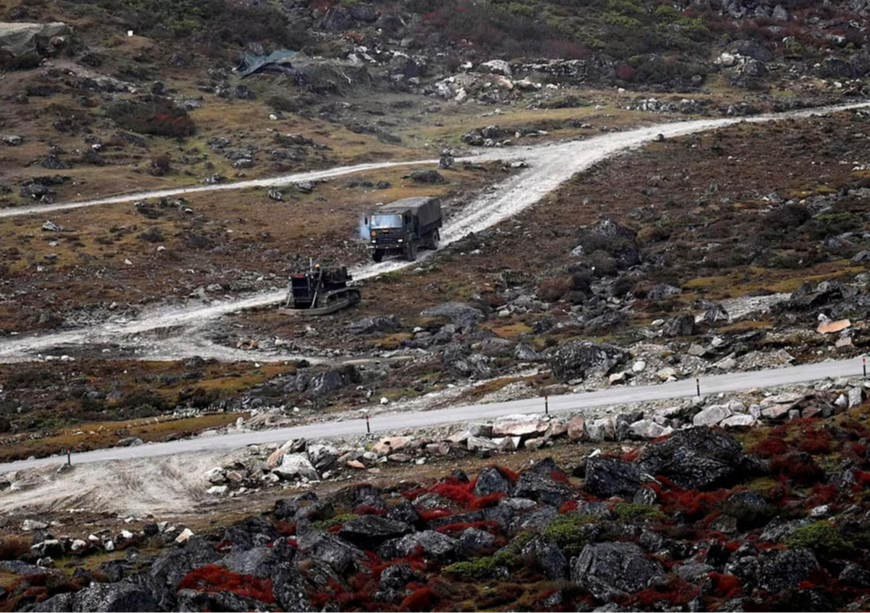“What’s in a name? That which we call a rose by any other name would smell just as sweet.” goes the line in William Shakespeare’s play, Romeo and Juliet. But apparently, China does not think so, and it recently embarked on yet another exercise to rename places in Arunachal Pradesh, bringing to the fore again the question of the unresolved border. The armies of India and China have been locked in a standoff at the Line of Actual Control (LAC) for around four years following the violent clashes in 2020. During this period, China has also attempted to change the status quo in other places along the LAC.
The Sela Tunnel is a force multiplier for the Indian Army since it will improve its ability to move soldiers and armaments quickly to the India-China border.
The renaming comes close on the heels of Prime Minister Narendra Modi’s visit to Arunachal Pradesh last month to inaugurate the Sela Tunnel that will secure connectivity to Tawang. In 1962, Indian and Chinese troops clashed in Tawang, and yet again in December 2022, the People’s Liberation Army made an unsuccessful bid to change the status quo in Tawang. The Sela Tunnel is a force multiplier for the Indian Army since it will improve its ability to move soldiers and armaments quickly to the India-China border.
Beijing recently released a map showing Arunachal Pradesh within China, terming it as Zangnan. While asserting territorial claims, China has put roadblocks in the path of sportspersons from Arunachal with respect to their participation in the Asian Games and World University Games, which Beijing hosted in 2023. China is reportedly settling its citizens in the villages that it has constructed along the LAC. Back to the renaming row, Arunachal is being sucked into a vortex of China’s larger aims with respect to religion, identity, and geopolitical contestation with India. In addition to Tawang’s strategic importance, it has a special place in Tibetan Buddhism, being the birthplace of the sixth Dalai Lama. China has been trying to consolidate its hold on Tibet since its annexation in the 1950s. Tibet’s capital, Lhasa, has been rocked by unrest in 1989 and 2008. There have been waves of immolations by Tibetan clergy and activists to protest China’s policies. Chinese President Xi Jinping visited Tibet in 2021, making it the first visit to the region by a head of State in nearly 30 years. During the trip, he visited the newly constructed railway station at Nyingchi close to the Arunachal border — Nyingchi has been linked to Lhasa via a high-speed train line.
Back to the renaming row, Arunachal is being sucked into a vortex of China’s larger aims with respect to religion, identity, and geopolitical contestation with India.
In the Xi era, efforts to sinicise the province where the current Dalai Lama is a revered figure have gathered momentum. Those advocating for the preservation of Tibetan language and culture have been prosecuted on charges of separatism. There have been efforts by the Chinese State to assert greater control over organised religion across China, particularly in Tibet. Senior officials of the Communist Party of China (CPC) have emphasised the need to build a “politically dependable” religious class who bear affection for their nation and religion. In Tibet, the CPC has sought to discredit the institution of the Dalai Lama, dubbing the current temporal head as a separatist. It has also asserted control on Buddhist monasteries and sought to game the reincarnation process. For example, the 11th Panchen Lama, who was barely six years old when he was endorsed in the 1990s, went missing, following which Beijing propped up its own nominee for the important position in Tibetan Buddhism. Beijing has stepped up efforts to erase Tibet’s independent identity by trying to popularise its Mandarin nomenclature “Xizang”.
In October 2023, China hosted the “Xizang Trans-Himalayan Forum for International Cooperation” that was attended by foreign delegates. Shortly after this gala, it released a white paper themed on Xizang’s governance. India can ill afford to neglect this name game and map fare as cartographic warfare is followed by the real McCoy.
Beijing has stepped up efforts to erase Tibet’s independent identity by trying to popularise its Mandarin nomenclature “Xizang”.
The timing chosen by China to resuscitate the boundary dispute is important. It hopes that the border row may find resonance in the public debate ahead of the 2024 general election and thereby put the government on the back foot as the Opposition parties would demand pushback from the government. Chinese actions are a reminder that even as we enter a two-month-long election season, Beijing is unlikely to stay quiet. The challenge from China will continue to manifest in different guises.
This commentary originally appeared in Hindustan Times.
The views expressed above belong to the author(s). ORF research and analyses now available on Telegram! Click here to access our curated content — blogs, longforms and interviews.




 PREV
PREV



